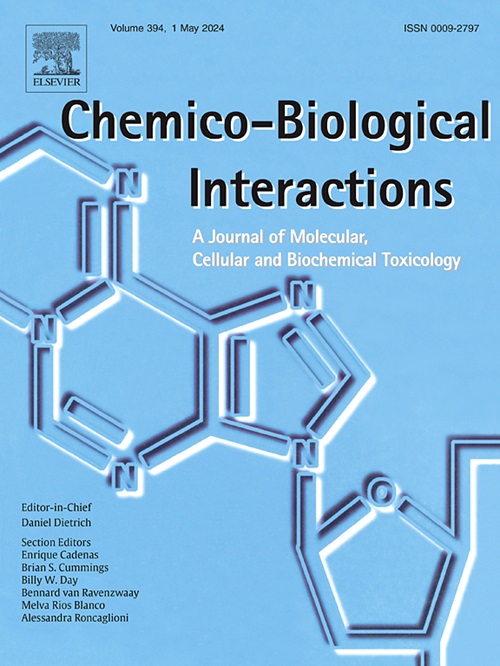探索邻苯二甲酸二-2-乙基己酯的肾毒性和分子机制:全面综述。
IF 4.7
2区 医学
Q1 BIOCHEMISTRY & MOLECULAR BIOLOGY
引用次数: 0
摘要
邻苯二甲酸二-2-乙基己酯(DEHP)是一种广泛应用于各种产品的增塑剂,可通过多种途径被人体吸收,并在肺部、肝脏、睾丸和肾脏中蓄积,可能损害这些器官的功能。最近,DEHP 的肾毒性受到了高度关注。大量流行病学研究结果表明,接触 DEHP 可能会造成肾脏损伤,导致结构和功能异常,加剧肾脏疾病的恶化。最新研究发现,DEHP 诱发肾毒性的机制可能涉及多种途径,包括细胞凋亡、自噬、铁变态反应、氧化应激、炎症、DNA 损伤和脂质代谢紊乱。本综述讨论了 DEHP 对肾功能的影响,并深入探讨了近年来 DEHP 介导的肾毒性分子机制。此外,综述还研究了番茄红素、绿茶多酚和槲皮素在改善 DEHP 引起的肾损伤方面的抗氧化和抗炎能力,为进一步的研究提供了依据。本文章由计算机程序翻译,如有差异,请以英文原文为准。
Exploring the nephrotoxicity and molecular mechanisms of Di-2-ethylhexyl phthalate: A comprehensive review
Di-2-ethylhexyl phthalate (DEHP), a widely applied plasticizer in various products, can be absorbed into the human body through several channels and accumulate in the lungs, liver, testes, and kidneys, potentially impairing the function of these organs. Recently, the nephrotoxicity of DEHP has received heightened attention. Numerous epidemiologic findings have demonstrated that DEHP exposure may contribute to renal damage, leading to structural and functional abnormalities and exacerbating the progression of kidney disease. Recent research has discovered the mechanisms behind DEHP-induced nephrotoxicity may involve a variety of pathways, including apoptosis, autophagy, ferroptosis, oxidative stress, inflammation, DNA damage, and lipid metabolism disorders. This review discusses the impact of DEHP on kidney function and delves into the molecular mechanisms of nephrotoxicity mediated by DEHP in recent years. In addition, the review examines evidence for the antioxidant and anti-inflammatory capacities of lycopene, green tea polyphenols, and quercetin in ameliorating DEHP-induced renal injury is reviewed, providing a basis for further research.
求助全文
通过发布文献求助,成功后即可免费获取论文全文。
去求助
来源期刊
CiteScore
7.70
自引率
3.90%
发文量
410
审稿时长
36 days
期刊介绍:
Chemico-Biological Interactions publishes research reports and review articles that examine the molecular, cellular, and/or biochemical basis of toxicologically relevant outcomes. Special emphasis is placed on toxicological mechanisms associated with interactions between chemicals and biological systems. Outcomes may include all traditional endpoints caused by synthetic or naturally occurring chemicals, both in vivo and in vitro. Endpoints of interest include, but are not limited to carcinogenesis, mutagenesis, respiratory toxicology, neurotoxicology, reproductive and developmental toxicology, and immunotoxicology.

 求助内容:
求助内容: 应助结果提醒方式:
应助结果提醒方式:


